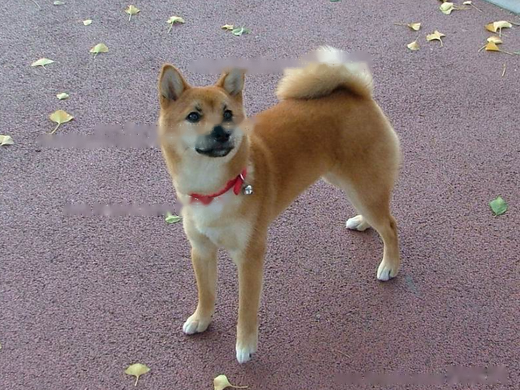First of all, I want to talk about my opinion on the leash. I don't recommend using the leash tied to the shoulder. I have always used the leash tied to the neck for dogs, and I don't use a normal collar.

I don't usually put a circle on dogs. Walking the dog is the owner walking the dog, not the dog owner. I have taught the dog the correct way since I was a child. If you have the habit of walking the dog, you will not have the trouble of being dragged by the dog.
The dog won't pull you to run, so you don't have to worry that the leash tied around the neck will be harmful to him, so use the one tied to the shoulders.
In my opinion, the shoulder strap is only used when you let the dog pull things and run, and in general, when you walk the dog, you just make the dog more comfortable to pull you and run, Instead, let him develop the bad habit of pulling you to run, why bother?
Practice dog walking in several stages
The first stage (two days)
First, help him tie a leash at home, instead of taking him away, let him sit next to you, mainly to get him used to the leash. After he can't tug-of-war with the leash, you can take him for a walk at home, and when he can naturally follow you, you can start taking him out. The second stage (one week)
Train him to follow you instead of pulling you, I will get the dog used to walking on my right (because avoid cars on the road ), also only to my right. At the beginning, the range can be larger. For example, within 50 cm of my right side, if he is within the range, the traction rope is loose (not stretched), and you need to use a little force when you leave this range (the traction rope is stretched). , about pulling him back into range. If he rushes forward, he will pull back, and if he walks too slowly, you will pull forward. Be careful
not pull him back, but pull (pull with a little force)
pull is to pull him slowly with the same amount of force come back
pull is a momentary force
pull has no effect, it will only cause him to tug-of-war with you
the collar I use , when you pull, he will tighten, and the dog will also tighten when you tug of war with you, so if you pull with a little force, the dog will be uncomfortable, and he will come back obediently. It might feel a little cruel at first, but trust me, after a few minutes, the dog will know to walk on your right. Long pain is worse than short pain. Instead of letting him tug-of-war with you for more than ten years, it is better to let him suffer a few times. In the next ten years, you and he can have the fun of walking the dog.
The third stage (two weeks)
Slowly narrow the range until it narrows down to the point where he will only walk to the right of your footsteps, so as to train him to pay attention to your footsteps , Knowing your existence, he will stop if you stop, and he will leave if you go. Constantly stop and go, turn left and right, if you don't keep up, you will pull. After two weeks of this stage, you can basically walk with the dog very easily. It is up to the owner to let him accept the fourth stage.
The fourth stage (weeks)
In the last stage, the dog will basically follow your footsteps, but it will still be affected by external forces (other dogs, people , things, things), at this stage I will deliberately come to Yin, knowing that there are other dogs in front of me, I will deliberately take the dog to walk over, and pay attention to the dog's eyes and find that he is paying attention to other dogs, I will run back , And pull the leash with a little force, so that after a few weeks of training, when you run back, the dog will not hesitate to keep up with you, and you can try not to use the leash in the dead of night.
Another point is that when you called the dog from a young age, as long as he came to you, you would give him a piece of feed as a reward. There is no car or person to try and let him go freely. As soon as you call him, he will habitually run back excitedly.
![[Dog Training 5] The training method of pet dog dining etiquette](/static/img/12192/12192_1.jpg)




